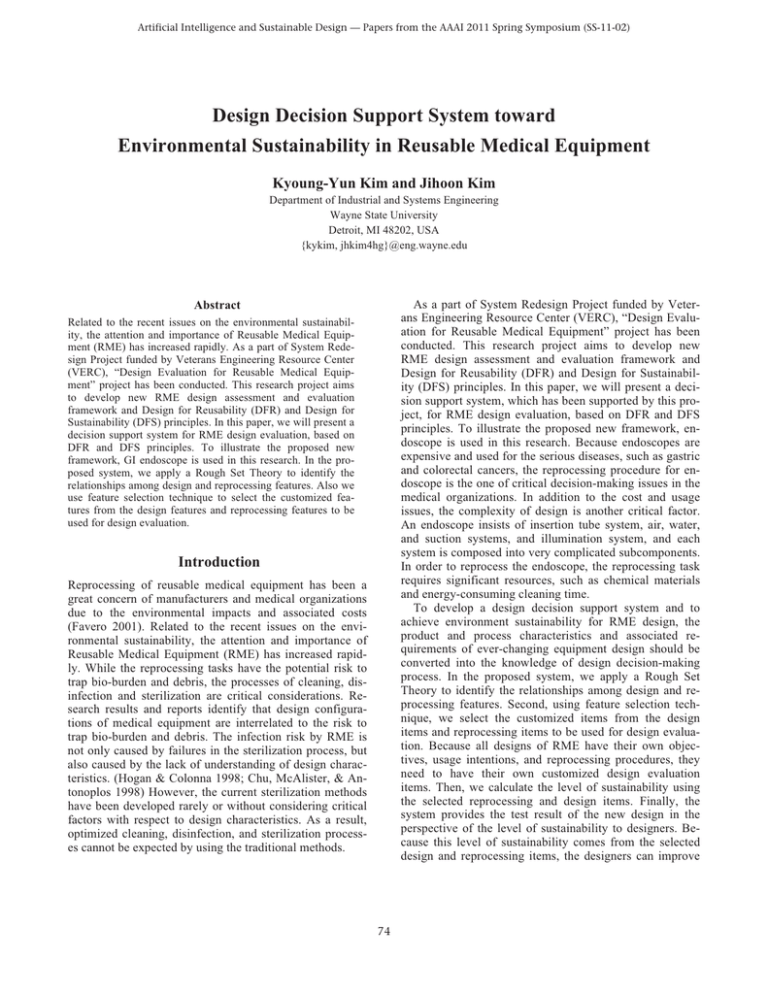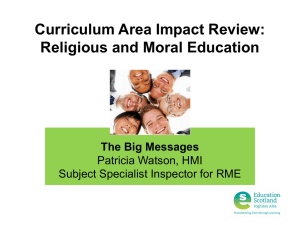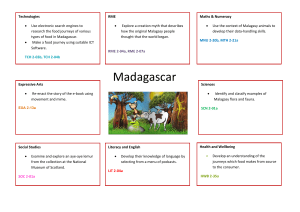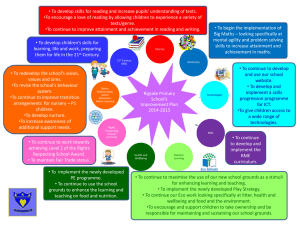Design Decision Support System toward Environmental Sustainability in Reusable Medical Equipment
advertisement

Artificial Intelligence and Sustainable Design — Papers from the AAAI 2011 Spring Symposium (SS-11-02)
Design Decision Support System toward
Environmental Sustainability in Reusable Medical Equipment
Kyoung-Yun Kim and Jihoon Kim
Department of Industrial and Systems Engineering
Wayne State University
Detroit, MI 48202, USA
{kykim, jhkim4hg}@eng.wayne.edu
As a part of System Redesign Project funded by Veterans Engineering Resource Center (VERC), “Design Evaluation for Reusable Medical Equipment” project has been
conducted. This research project aims to develop new
RME design assessment and evaluation framework and
Design for Reusability (DFR) and Design for Sustainability (DFS) principles. In this paper, we will present a decision support system, which has been supported by this project, for RME design evaluation, based on DFR and DFS
principles. To illustrate the proposed new framework, endoscope is used in this research. Because endoscopes are
expensive and used for the serious diseases, such as gastric
and colorectal cancers, the reprocessing procedure for endoscope is the one of critical decision-making issues in the
medical organizations. In addition to the cost and usage
issues, the complexity of design is another critical factor.
An endoscope insists of insertion tube system, air, water,
and suction systems, and illumination system, and each
system is composed into very complicated subcomponents.
In order to reprocess the endoscope, the reprocessing task
requires significant resources, such as chemical materials
and energy-consuming cleaning time.
To develop a design decision support system and to
achieve environment sustainability for RME design, the
product and process characteristics and associated requirements of ever-changing equipment design should be
converted into the knowledge of design decision-making
process. In the proposed system, we apply a Rough Set
Theory to identify the relationships among design and reprocessing features. Second, using feature selection technique, we select the customized items from the design
items and reprocessing items to be used for design evaluation. Because all designs of RME have their own objectives, usage intentions, and reprocessing procedures, they
need to have their own customized design evaluation
items. Then, we calculate the level of sustainability using
the selected reprocessing and design items. Finally, the
system provides the test result of the new design in the
perspective of the level of sustainability to designers. Because this level of sustainability comes from the selected
design and reprocessing items, the designers can improve
Abstract
Related to the recent issues on the environmental sustainability, the attention and importance of Reusable Medical Equipment (RME) has increased rapidly. As a part of System Redesign Project funded by Veterans Engineering Resource Center
(VERC), “Design Evaluation for Reusable Medical Equipment” project has been conducted. This research project aims
to develop new RME design assessment and evaluation
framework and Design for Reusability (DFR) and Design for
Sustainability (DFS) principles. In this paper, we will present a
decision support system for RME design evaluation, based on
DFR and DFS principles. To illustrate the proposed new
framework, GI endoscope is used in this research. In the proposed system, we apply a Rough Set Theory to identify the
relationships among design and reprocessing features. Also we
use feature selection technique to select the customized features from the design features and reprocessing features to be
used for design evaluation.
Introduction
Reprocessing of reusable medical equipment has been a
great concern of manufacturers and medical organizations
due to the environmental impacts and associated costs
(Favero 2001). Related to the recent issues on the environmental sustainability, the attention and importance of
Reusable Medical Equipment (RME) has increased rapidly. While the reprocessing tasks have the potential risk to
trap bio-burden and debris, the processes of cleaning, disinfection and sterilization are critical considerations. Research results and reports identify that design configurations of medical equipment are interrelated to the risk to
trap bio-burden and debris. The infection risk by RME is
not only caused by failures in the sterilization process, but
also caused by the lack of understanding of design characteristics. (Hogan & Colonna 1998; Chu, McAlister, & Antonoplos 1998) However, the current sterilization methods
have been developed rarely or without considering critical
factors with respect to design characteristics. As a result,
optimized cleaning, disinfection, and sterilization processes cannot be expected by using the traditional methods.
74
their design with the obtained level-of-sustainability result
as the design decision reference.
reusable endoscopy accessories.
Endoscope as Reusable Medical Equipment
Endoscope is lighted optical equipment used to get a deep
look inside the body and examine organs such as the throat
or esophagus. Since the endoscopes are developed depending on their specialized purposes and usage, types of endoscope are various. Most of the endoscopes consist of reusable main parts, single or re-used sub parts, and single used
accessories. This complex configuration leads to more reprocessing procedures, more time cost, and more economic
costs. Surface materials of the parts and the part connection
types are also important in the reprocessing process of endoscopes. In this paper, Gastrointestinal (GI) Endoscope is
considered as an example of RME. Screenshot and configuration example is shown below: Figure 1(a) and Figure
1(b).
Reusable Medical Equipment
RME is defined in the report of Department of Veterans
Affairs as followed:
“RME is any medical equipment designed by the manufacturer to be reused for multiple patients. All RME must
be accompanied by reprocessing instructions provided
by the manufacturer.”
The importance of reprocessing RME is addressed in this
definition and has the possibility of raising potential problems such as reprocessing costs and risks.
Disinfection and Sterilization of RME in the Cost
Perspective
Disinfection and sterilization are critical procedures to reuse RME in medical organizations, since the failure of these procedures can lead to the serious problems such as secondary infections to other patients. Moreover, the reprocessing processes for disinfection and sterilization are connected to the time costs as well as economic costs. Several
research efforts have been conducted to stress the importance of reprocessing processes in the economic and
time cost perspectives. Sopwith, Hart, and Garner (2002)
conducted about disinfection with alcohol to find best practice. They analyzed the effectiveness of it with time cost.
Rutala and Weber (2004) addressed that the critical level
of treated items could decide the cleaning process and
time. Nanta et al. (2005) analyzed the costs of single-use
disposable suction tubes and recycling of disposable tubes.
Raltz et al. (1995) provided the proper number of reusable
uses through the cost analysis.
Figure 1(a). Basic components of a standard flexible videoendoscope (Ginsberg 2005, p. 30)
Risk of Reprocessing Reusable Medical Equipment
Although the failure of conducting reprocessing processes
cannot be accepted, the outbreaks of contamination for
infections transmitted by RME are often reported. For example, the sources of contamination for infections (36 outbreaks) transmitted by the gastrointestinal endoscopes from
1974-2001 were Cleaning-3 (12%), Disinfection-19 (73%),
Rinse, Dry, Store-3 (12%), and Etiology unknown-1 (3%).
More than 96 percent of the sources come from the failure
of reprocessing processes. Also the medical agencies such
as FDA, CDC (Centers for Disease Control and Prevention), and VA (Department of Veterans Affairs)
acknowledge the risks of improper reprocessing (BS&S
Feature 2010). In the case of endoscope, known errors that
have occurred during reprocessing of flexible endoscopic
equipment include the improper reprocessing intervals for
Figure 1(b). Configuration Example of the physical systems for GI videoendoscope (Partial View)
Design for Sustainability in Product Perspectives
The concept of design for sustainability (DFS) in the product
development domain is often used as the similar meaning of
design for environment or design for life cycle. The objective
of DFS is to design a product with minimum negative environmental impact throughout its whole product life cycle
(Chiu 2007). Ljungberg (2006) provided the guidelines for
sustainable products with ten items. In his guideline, he ad-
75
many accessories, the elements to consider increase. Since
the designers have difficulties to access all the needed information and the importance of the information are different, it is critical to select proper features.
dressed that reducing the emissions, dispersion and creation of
toxic elements during its lifetime is important. From this view,
determining whether the developed RME is sustainable or not
based on the relationship with the reprocessing process is important procedure to the RME designers. Howarth and Hadfield (2006) developed a model for product designers to review the product sustainability in the detail design phase.
They provided the set of guidelines for helping sustainable
product development to consider each element during life
cycle.
Level of Sustainability. Level of sustainability means the
way of providing the final results in this system. This system provides the level of development feasibility in the
perspective of sustainability into three classes, i.e., highly
feasible to develop, revision-needed to develop, and impossible to develop.
Framework of the System
Data
Overall Framework
The needed dataset for the system is consisted of three
parts: 1) design feature, 2) reprocessing feature, and 3)
result feature (Figure 4).
The main purpose of this system is to help medical equipment designers to develop more sustainable devices. To do
this, this system framework consists of following components: 1) designers as user group; 2) product design database; 3) sustainability knowledgebase, and result report
with level of sustainability (See Figure 3.).
Figure 4. Dataset for the system
Design feature. We gather data for design features from
the product design specification document (PDS). Also, it
includes various design related data, e.g., the number of
parts and accessories, the way of connection, material, surface treatment method, and so on.
Figure 3. Overall architecture for design decision support
system
Reprocessing feature. Reprocessing features include the
data elements related to reprocessing process for reusing
RME. Since reprocessing features can be gathered from the
reprocessing process experts or RME manufacturers, not
the product designers, those should be stored in the
knowledge-base as datasets, cases, or any other knowledge
forms.
The system components are explained below:
Designers as User Group. To evaluate how the developing RME is sustainable, the characteristics of RME as a
physical product are needed. The user group of system has
the ability to input those characteristics. Therefore, RME
product designers will be the proper user group of this system.
Result feature. Result feature means the level of sustainability mentioned earlier. A classification into the three
types of feasibility is provided as the result with the perspective of level of sustainability.
Product Design Database. Product design database has
the design features of same or similar RME that are already
established. Shape, material, and assembly feature can be
examples of data elements.
Implementation Procedure of the System
For the purpose of this work, we developed a formal approach that includes pattern recognition, feature selection
with similarity, and rough set-based reasoning.
Sustainability Knowledge-base. In this system, sustainability knowledge-base includes sustainability related information and knowledge that should be considered during
RME reprocessing process. For instance, ingredients of
detergent for sterilization and disinfection, economic costs,
and non-economic costs such as reprocessing time.
The procedure for implementing the system is shown in
Figure 5. This figure illustrates detailed steps of the formal
approach.
AI Engine. AI Engine has three steps due to the complexity of RME development. The first step is to select feature
for RME in the view of level of sustainability. Since RME
(such as endoscopes) includes the complex equipment with
76
cessing process data attribute. From the various perspectives of manufacturers, the recommended reprocessing
process can be various and also from the difference of the
strengths of manufacturers, the weight of each process can
be different. Last, output data attributes should be more
detail attributes for the later system. In addition to development feasibility based on level of sustainability, more
attributes, e.g., functionality, use context, etc., are helpful
to the designers for RME design process.
Conclusion
In this paper, we proposed a conceptual framework of design decision support system to determine the level of sustainability of RME. In this framework, Rough Set Theory
is used to identify the relationships among design and reprocessing features. Using feature selection technique, the
customized features from the design and reprocessing features are used for design evaluation. The anticipated outcome of the design support system is RME design feasibility analysis using the level of sustainability, based on the
selected reprocessing and design features.
Figure 5. System implementation procedure
References
Discussion
BS&S Feature. 2010. Reprocessing Flexible Endoscopy Equipment, Biomedical Safety & Standards, 40(1); 1-3.
Potential Obstacles
To implement the system for the project, some potential
obstacles exist. One is that design feature data objects collection of the newly introduced RME design will be difficult to apply proposed procedure; it is because the universal data object does not have the new design features. For
example, if the system developed for standard flexible GI
endoscopes, it is difficult to treat the cases of the innovative endoscopes (such as capsule type endoscopes). Another potential difficulty is on the usage characteristics of
RME. Since most of medical equipment is used for human
body, it is critical to follow the proper reprocessing process. As the result of this system for development feasibility is based on the level of sustainability alone, the recommended reprocessing processes should be confirmed by
reprocessing experts. These obstacles can be the topics of
further research.
Chiu, M. C.; Lin, C. Y.; and Okudan, G. E. 2007. An Investigation of the
Applicability of DfX Tools during Design Concept Evolution Proceeding
of Asia Pacific Industrial Engineering and Management Science 2007
(APIEMS) conference, Dec 9-13, 2007, Kaohsiung, Taiwan.
Further Research
Ljungberg, L. Y. 2007. Materials selection and design for development of
sustainable products. Materials and
Chu, N.S.; McAlister, D.; and Antonoplos, P.A. 1998. Natural bioburden
levels detected on flexible gastrointestinal endoscopes after clinical use
and manual cleaning. Gastrointestinal Endoscopy 48(2): 137-142.
Favero, M. S. 2001. Requiem for reuse of single-use devices in US hospitals. Infection Control and Hospital Epidemiology 22(9); 539-541
Ginsberg, G. G. 2005. Clinical gastrointestinal endoscopy. Philadelphia.:
Elsevier Saunders.
Hogan, J. M., and Colonna, T.E. 1998. Product Liability Implications of
Reprocessing and Reuse of Single-Use Medical Devices. Food and Drug
Law Journal 53; 385-402
Howarth, G., and Hadfield, M. 2006. A sustainable product design model.
Materials and Design 27(10); 1128-1133.
Kozarek, R.; Raltz, S.; Merriam, L.; and Sumida, S. 1996. Disposable
versus reusable biopsy forceps: a prospective evaluation of costs. Gastrointestinal Endoscopy 43(1); 10-13
To overcome the potential obstacles mentioned above and
to meet the perspective of funding VERC project, some
further research issues are remained. In this paper, the relationship between data features and reprocessing features
are extracted by the matching effort based on the previous
relationships. While reprocessing processing features are
almost fixed, design features are very flexible. Therefore,
research effort for relationship generation is needed, e.g.,
Design Structure Matrix (DSM) analysis about RME design features and reprocessing process features. Another
further research topic is to give a weight to each repro-
Design, 28(2): 466-479.
Nanta, P.; Senarat, W.; Tribuddharat, C.; and Danchaivijitr, S. 2005. Costeffectiveness and safety of reusable tracheal suction tubes. Journal of the
Medical Association of Thailand 88(suppl): 86-88.
Rutala, W. A. and Weber, D. J. 2004. Disinfection and Sterilization in
Health Care Facilities: What Clinicians Need to Know. Clinical Infectious
Diseases 39(5): 702-709.
Sopwith, W.; Hart, T.; and Garner, P. 2002. Preventing infection from
reusable medical equipment: a systematic review. BMC Infectious Diseases 2(4)
77




